Featured Articles
Hagler-Leonard: The Closing Act
 The Leonard-Hagler fight, now 25 years old, was the closing act in the drama that George Kimball aptly called the Four Kings. Kimball’s definitive book of the same title chronicled that golden era, the 1980s, when for the most part boxing’s broadest appeal came at the lower weights. Outpacing all others were the four champions who fought one another in a decade-long struggle for supremacy—Ray Leonard, Roberto Duran, Thomas Hearns, and Marvin Hagler.
The Leonard-Hagler fight, now 25 years old, was the closing act in the drama that George Kimball aptly called the Four Kings. Kimball’s definitive book of the same title chronicled that golden era, the 1980s, when for the most part boxing’s broadest appeal came at the lower weights. Outpacing all others were the four champions who fought one another in a decade-long struggle for supremacy—Ray Leonard, Roberto Duran, Thomas Hearns, and Marvin Hagler.
By the time Hagler and Leonard met in 1987, they were the only ones in the group who hadn’t fought. And though there would be two more matches in the series—Leonard-Hearns II and Leonard-Duran III, both in 1989—they had a retro feel. Those fights attracted interest, but they were more about unfinished personal business than about the future of boxing. (Try naming what titles were at stake in either of those fights, for example).
Hagler vs. Leonard, on the other hand, radiated significance: everyone knew that it represented a long-deferred showdown, that it was for Hagler’s cherished middleweight title, and that the winner would be the only member of the quartet to beat each of the others. It was the climactic fight of an era that boxing fans old enough to remember it miss terribly.
Many look back at the eighties in boxing and remember Mike Tyson, but Tyson didn’t get going until the middle of the decade, and though he would surpass the fame of the four kings, he was never in a fight like the ones they waged against one another. Unlike them, Tyson didn’t necessarily spark more interest in boxing; people came to see him as a spectacle, a phenomenon. Except for his bout with Michael Spinks in 1988, the idea that he might lose a fight was mostly beside the point.
By contrast, all of the quartet’s fights captured public interest not only because the fighters were compelling personalities, but because they were evenly matched. Sure, in retrospect it might seem obvious that Tommy Hearns would blast Duran out in a few rounds, as he did in 1984—the only real mismatch of the series—but that wasn’t how people thought of it going in. Leonard versus Duran, Hearns versus Hagler, Leonard versus Hagler—people could easily envision either man winning. Their battles only make the contrast more frustrating with today—when a fight even non-boxing fans want to see remains stubbornly unmade, year after year.
Leonard’s victory over Hagler is widely regarded as his crowning accomplishment, and understandably so. But it should be put in perspective. He didn’t defeat a peak Hagler. He waited Hagler out for years and fought a diminished, aged fighter who had become frightfully slow. Of course, Leonard himself had aged in the interim, he’d only fought once in five years, and he was moving up in weight. So this is not to scant his remarkable achievement. But in my view, it does not rank with his triumphs over Duran and Hearns.
Lingering to the present day is the controversy over the judges’ decision in the fight: one judge going 115-113 for Hagler while the other two scored it for Leonard, 115-113 and 118-110. In the numerous times I’ve watched the fight, I’ve had Leonard winning every time. A few years ago I scored it 116-113 for Ray, or 7-4-1 in rounds. Yet the many respected voices—from Eddie Fitch to Al Bernstein to Bernard Hopkins—who believe Hagler won should remind us about the importance of humility. Short of a knockout that brings matters to a decisive end, the verdict in any fight will rely on subjective judgment—and that judgment will in turn shape the story history tells.
Finally, it’s striking how 25 years later, both men have remained largely in character. Leonard never drifted far from the public eye, doing boxing commentary, making himself available for interviews, and last year publishing a frank and painful autobiography as well as competing on Dancing with the Stars. Love him or hate him, he remains Sugar Ray: magnetic, mostly sympathetic, and maybe (still) a bit needy. Hagler executed one of the more unique second acts any athlete has pulled off, moving to Italy, where he has lived ever since. He became fluent in Italian, pursued a movie career, and began a new life. He rarely surfaces in U.S. media. Hagler’s final act as a boxer—simply walking away—exemplified his stoic self-possession.
What different men, and what fighters.
-
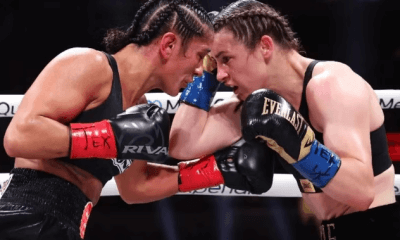
 Featured Articles3 weeks ago
Featured Articles3 weeks agoResults and Recaps from New York Where Taylor Edged Serrano Once Again
-

 Featured Articles6 days ago
Featured Articles6 days agoThe Hauser Report: Zayas-Garcia, Pacquiao, Usyk, and the NYSAC
-
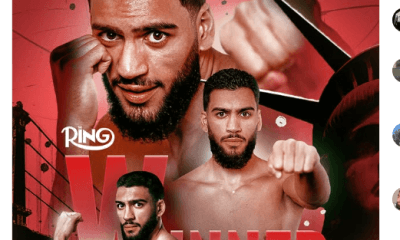
 Featured Articles3 weeks ago
Featured Articles3 weeks agoResults and Recaps from NYC where Hamzah Sheeraz was Spectacular
-
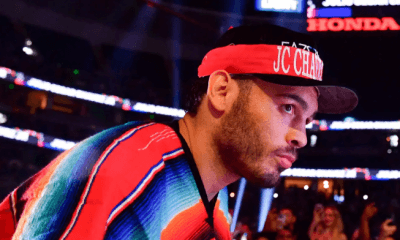
 Featured Articles4 weeks ago
Featured Articles4 weeks agoFrom a Sympathetic Figure to a Pariah: The Travails of Julio Cesar Chavez Jr
-
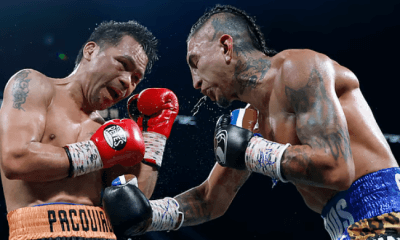
 Featured Articles2 weeks ago
Featured Articles2 weeks agoManny Pacquiao and Mario Barrios Fight to a Draw; Fundora stops Tim Tszyu
-
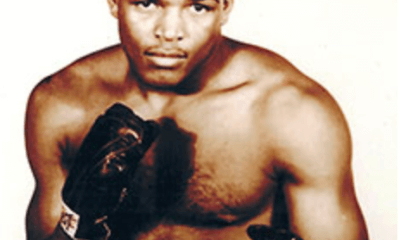
 Featured Articles3 weeks ago
Featured Articles3 weeks agoPhiladelphia Welterweight Gil Turner, a Phenom, Now Rests in an Unmarked Grave
-
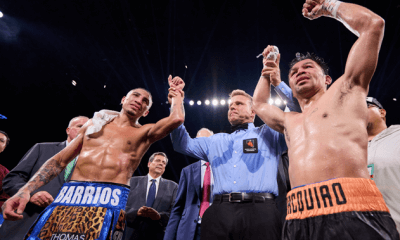
 Featured Articles2 weeks ago
Featured Articles2 weeks agoArne’s Almanac: Pacquiao-Barrios Redux
-
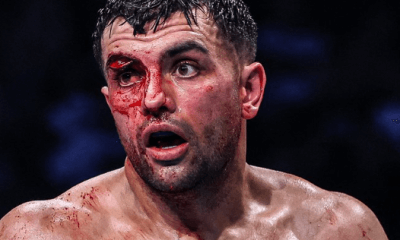
 Featured Articles4 weeks ago
Featured Articles4 weeks agoCatterall vs Eubank Ends Prematurely; Catterall Wins a Technical Decision

















